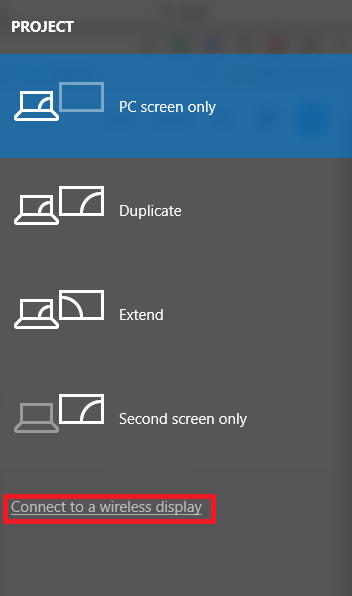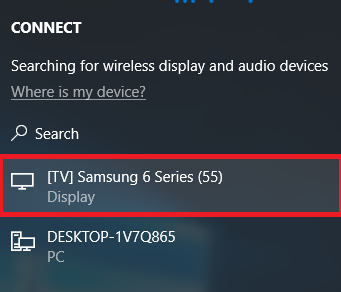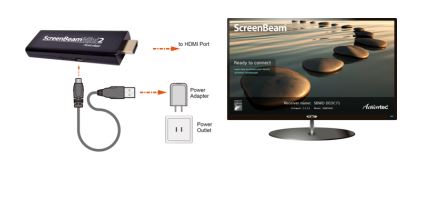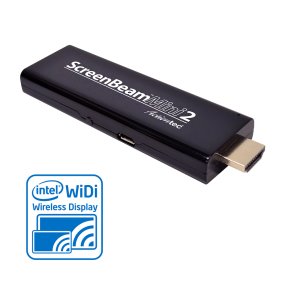How to Setup Screen Mirroring for a PC
Screen Mirroring (also referred to as screencasting) allows you to wirelessly transmit pictures, videos, movies, presentations, and games from a laptop or desktop screen to a large screen. The term “large screen” usually refers to an HDTV or 4KTV, but you can also cast the content to a media projector if it has HDMI or wireless support.
In this guide, I will walk you through the best methods for achieving screen mirroring on a PC. If you have a recent PC and a Smart TV, you might be able to cast your content to a bigger screen without having to buy an external adapter.
If you’re looking for a way to set up wireless screen mirroring from a PC to a bigger screen, follow one of the methods below. If you want to avoid spending any money on an additional adapter, follow Method 1 and see whether your equipment supports it.
Method 1: Wirelessly Mirror Your Laptop/PC to a TV (No Adapter)
If your laptop is relatively new (purchased within the last 3-4 years), there is a high chance that it supports Miracast technology – this is what is needed to cast content from a PC to a TV without an adapter.
This method will only work on Windows 8.1 and Windows 10, and you will need a smart TV to go along with it. In order for this to work, you will need to have the latest Miracast wireless display drivers, which are handled by WU (Windows Update). With this in mind, make sure your operating system is up to date in order to ensure that the drivers are installed.
Note: Keep in mind that installing the latest OS updates does not guarantee that this method will work. The Miracast technology is likely not supported on older laptops and PCs.
Follow the steps below to screen mirror your laptop to a Smart TV without an adapter:
- Make sure both your PC and your smart TV are connected to the same wireless network.
- On your PC or laptop, press the Windows key + P to bring up the Project menu.
- From the newly appeared menu, click on Connect to a wireless display.
 Note: If you cannot see the ‘Connect to a Wireless Display‘ button, it means that your PC/laptop does not support Miracast technology. In this case, you will have to use Method 2.
Note: If you cannot see the ‘Connect to a Wireless Display‘ button, it means that your PC/laptop does not support Miracast technology. In this case, you will have to use Method 2. - Wait for the setup to scan your wireless network for smart devices compatible with screen mirroring, and then click on your Smart TV.

- Wait for your laptop/PC screen to be mirrored on your TV. Depending on your TV model, you might need to allow the connection on your TV.
- Your screen should be mirrored within seconds. When you want to disable it, simply press the Windows key + P again and hit the Disconnect button.
Method 2: Wirelessly Mirror Your Laptop/PC to a TV (With an Adapter)
There are many different adapters capable of mirroring your PC/laptop screen wirelessly. However, if you’re looking for a reliable and cost-effective way to do it, ScreenBeam Mini2 is arguably your best option. This is partly true because ScreenBeam Mini2 uses the same Miracast protocol featured in Method 1, which works very well on almost all Windows versions.
The ScreamBeam Mini2 is essentially a compact adapter that can be connected to your HDTV, allowing for wireless content sharing. This device is compatible with Windows 8.1, Windows 8, Windows 7, WiDi, tablets, smartphones, and Miracast. The device establishes a direct 2.4/5GHz connection, eliminating the need for an existing Wi-Fi network.
ScreenBeam Mini 2 is compatible with the following:
- Windows 8.1 systems and mobile devices support Miracast.
- Windows 10 systems and mobile devices support Miracast.
- Windows 7, 8 (or later) systems with Intel WiDi software.
- Windows 7, 8 (or later) systems require a USB transmitter and the ScreenBeam Kit software.
- Android phones and tablets with native Miracast support are available in Android 4.2 and above.
So, how does it work? It’s super easy.
- Get the receiver, USB cable, power adapter, and HDMI/4KTV extension cable from the receiver’s package.
- Plug the small male connector of the USB cable into the power port on the receiver.
- Plug the receiver into an available HDMI port on the HDTV/4KTV.
- Plug the large male connector of the USB cable into the power adapter, and plug the power adapter into a power outlet. When steps 1-4 are complete, the hardware should be connected as shown in the figure below.
 Turn on the HDTV/4KTV and set it to display the input from the correct HDMI port connected in step 1.
Turn on the HDTV/4KTV and set it to display the input from the correct HDMI port connected in step 1.
Verify that the “Ready To Connect” screen appears on the HDTV.
The Receiver is now connected to the HDTV monitor and is ready to use.
To connect a Windows 8/8.1/10 computer:
From the Windows desktop, go to the Charms menu and select Devices. You can also use the shortcut keys (Windows logo + K).

Note: On Windows 10, the shortcut (Windows logo + K) will take you directly to the Devices menu, where you can click on the ScreenBeam Mini 2 receiver to start the connection. If you are using Windows 10, you can skip straight to step 5. However, if you do not see the receiver listed under devices, follow this link (here) and download the latest available software. Also, make sure to allow all your pending Windows updates.
When the Devices menu appears, select Project.

When the “Project” menu appears, select ‘Add a Wireless Display.’ Windows will search for available devices.

A “PC and Devices” screen appears. Click on “Devices” and, from the list that appears, select “Receiver.

The Windows 8.1 device connects to the Receiver.

The HDTV/4KTV displays a message to show the status of the connection.


When the last screen, shown above, is displayed, the device has connected to the receiver. The device’s screen should be displayed on the HDTV/4KTV.
Display mode.
ScreenBeam Mini 2 supports three display modes when connected with a compatible wireless display application, such as Intel WiDi or Windows 8.1 Project. In Windows (8, 8.1, and 10), press the Windows logo and P keys simultaneously to launch the display options, and select the desired display mode from the available options.


Duplicate
The duplicate mode is used to display the same content on both the device’s screen and the HDTV simultaneously.
Note: There may be a minor delay between the content displayed on the HDTV screen and the device’s screen. This is due to the current state of wireless display technology.
Extend
The Extend mode creates a single, extended “screen” between the source device and the HDTV. When in Extend mode, dragging windows to the right side of the device’s screen displays those windows on the HDTV, while dragging windows to the left of the HDTV screen displays them back on the device’s screen. This mode allows users to display selected content on the HDTV, while all other windows remain on the device’s screen. When this mode is first selected, the HDTV displays only the Windows desktop.
Second Screen Only
The Second Screen Only mode causes the HDTV to be the sole display for the device. All content will be displayed on the HDTV, while the source device’s screen will remain blank.
You can purchase this device from Amazon by clicking the buy button below.

You can buy the ScreenBeam Mini 2 from Amazon